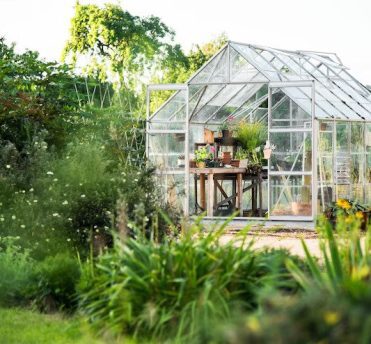Creating greenhouse

2 August, 2023 3 Minutes Read
Creating your greenhouse is a rewarding project for any green-thumbed enthusiast. The UK offers unique conditions that allow gardeners to extend the growing season and protect delicate plants from harsh weather conditions. However, the right material choice can determine the success of your growing endeavors.Selecting the Right MaterialThe materials you choose for your greenhouse significantly affect the heat retention, light penetration, longevity, and overall functionality of your structure. Therefore, it's essential to carefully consider each material's properties.GlassTraditionally, glass has been the go-to material for greenhouse construction. With excellent light transmission properties, glass allows a high degree of sunlight to reach the plants inside.However, it's important to note that traditional glass is less energy-efficient as it loses heat quickly, making it a less suitable choice for colder regions of the UK. On the other hand, double-glazed or insulated glass offers greater heat retention but comes at a higher cost.PolycarbonatePolycarbonate sheets have risen in popularity due to their lightweight nature, strength, and insulative properties. Offering 85-88% light transmission, polycarbonate provides a balanced blend of sunlight and shade, reducing the risk of plant scorching.Polycarbonate greenhouses are easier to install, due to the lightweight nature of the material. Plus, with greater resistance to breakage compared to glass, it's a safer choice for households with children or pets.Plastic FilmA cost-effective option, plastic film or polyethylene coverings are common for large-scale, commercial greenhouses. This material provides good light transmission and flexibility, making it suitable for a range of greenhouse designs. However, it is less durable and requires replacement every few years.Material for Greenhouse FramesWhile the covering material plays a critical role in light transmission and heat retention, don't overlook the importance of the frame. The frame's robustness is crucial to withstand the UK's ever-changing weather conditions.AluminiumAluminium is a commonly used material for greenhouse frames. It's lightweight, sturdy and doesn't rust, giving it high longevity. However, aluminum is a poor insulator, which may contribute to heat loss in the greenhouse.WoodWood offers a more aesthetically pleasing, natural look, and has better insulation properties than aluminum. However, it requires more maintenance to prevent rot and pest infestations. Use pressure-treated timber or hardwoods like cedar or redwood for the best longevity.SteelSteel frames offer great strength and durability, and are ideal for larger greenhouses. However, they can be heavy and more challenging to work with. Choose galvanized steel to avoid rusting issues.ConclusionWhen building your greenhouse, keep in mind that the best material depends on your specific circumstances, including local weather, budget, and personal aesthetic preferences. Whether you opt for traditional glass, versatile polycarbonate from Simply Plastics, or a plastic film, ensure it suits your needs and facilitates your gardening goals. The same applies to your choice of framing material; balance aesthetics, durability, and thermal properties when making your selection.In essence, creating the perfect greenhouse is about blending functionality with personal style. Whatever materials you choose, here's to the joy of growing your own plants, regardless of the British weather!Read Also:Is Natural Gas Renewable? Everything You Should Know About RNG In 2023!6 Changes You Can Make In Your Business To Help The EnvironmentBest Ways To Use Green Technologies









